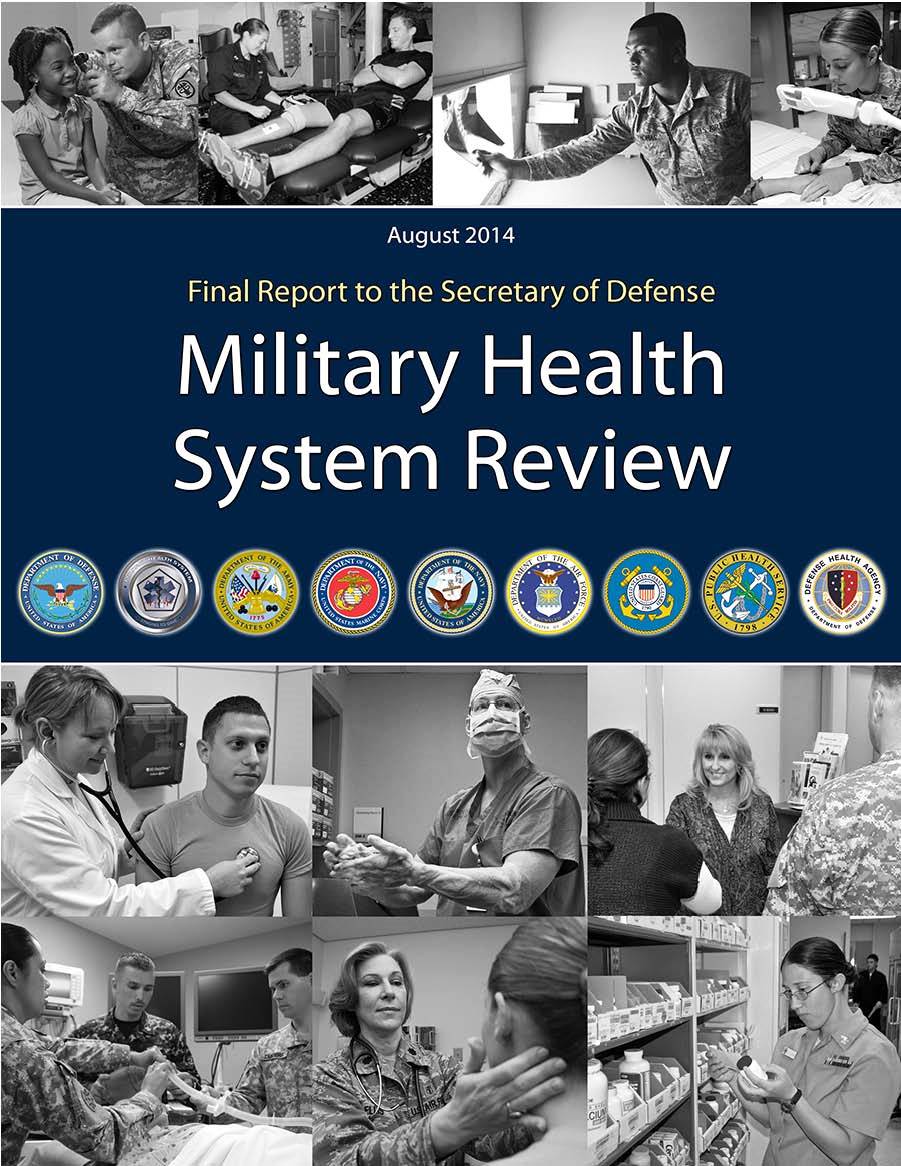Skip subpage navigation
Nothing is more important than the health and well-being of our people. The Department of Defense is committed to continuous improvement of the care delivered to our people. To ensure the Military Health System is meeting that commitment, former Secretary of Defense Chuck Hagel directed a 90-day review of the MHS, focused on access to care, safety, and the quality of care. The final report, which can be downloaded below, provides a look at performance in both military treatment facilities and in care purchased from civilian providers.
What did the review find?
 The review found that the MHS delivers safe, timely, and quality care that is largely comparable to care delivered in the civilian sector. The MHS demonstrates wide performance variability with some areas better than civilian counterparts and other areas below national and Department benchmarks.
The review found that the MHS delivers safe, timely, and quality care that is largely comparable to care delivered in the civilian sector. The MHS demonstrates wide performance variability with some areas better than civilian counterparts and other areas below national and Department benchmarks.
The review team included the participation of six independent, esteemed, external experts who serve as national leaders in patient quality and safety. These experts reviewed both the methodology of the report and the performance of the MHS. Their individual reviews are included in the report.
On Oct. 1, 2014, Secretary Hagel signed a memorandum directing the MHS to take specific action on access, quality, patient safety, transparency and patient engagement.
What did the review recommend?
The MHS Review made six overarching recommendations, focusing on standardization, process improvement, and transparency. 77 specific recommendations were nested under these six over-arching recommendations and can be found in the body of the report.
- The MHS should identify the cause of variance for MTFs that are outliers for one or more measures and, when due to poor performance, develop corrective action plans to bring those MTFs within compliance.
- The MHS should develop a performance management system adopting a core set of metrics regarding access, quality, and patient safety; further develop MHS dashboards with system-wide performance measures; and conduct regular, formal performance reviews of the entire MHS, with the DHA monitoring performance and supporting MHS governance bodies in those reviews.
- The MHS should develop an enterprise-wide quality and patient safety data analytics infrastructure, to include health information technology systems, data management tools, and appropriately trained personnel. There should be clear collaboration between the DHA’s analytic capabilities, which monitor the MHS overall, and the Service-level analytic assets.
- The MHS should emphasize transparency of information, including both the direct and purchased care components, with visibility internally, externally, and to DOD beneficiaries. Greater alignment of measures of the purchased care component with those of the direct care component should be incorporated in TRICARE regional contracts.
- Through MHS governance, policy guidance can be developed to provide the Services with common executable goals. While respecting the Services’ individual cultures, this effort would advance an understanding of the culture of safety and patient-centered care across the MHS.
- The MHS should continue to develop common standards and processes designed to improve outcomes across the enterprise in the areas of access, quality, and patient safety where this will improve quality, or deliver the same level of quality at decreased cost (i.e., better value).
How can I get involved?
The MHS is committed to listening to patients. If you have questions or want to provide information about access, quality of care and safety in the MHS, send the MHS Review team an email.
For those who wish to see the raw data from the tables included in this report, we have made available a series of Comma Separated Value files with the table data included in the zip files below. The six files contain the raw data for tables
Use the pull-down menu to access the MHS Review Final Report. Because of the size of the document, the report has been broken into several smaller documents. The files available are:
File 1: The Table of Contents and the Executive Summary
File 2: Section 1 - Introduction and Section 2 -
You are leaving Health.mil
The appearance of hyperlinks does not constitute endorsement by the Department of Defense of non-U.S. Government sites or the information, products, or services contained therein. Although the Defense Health Agency may or may not use these sites as additional distribution channels for Department of Defense information, it does not exercise editorial control over all of the information that you may find at these locations. Such links are provided consistent with the stated purpose of this website.
You are leaving Health.mil
View the external links disclaimer.
Last Updated: February 20, 2024